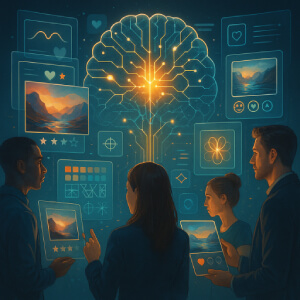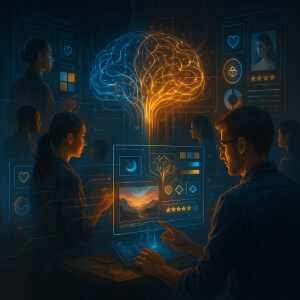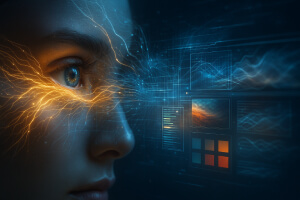How Neural Networks Learn Aesthetic Attributes

Training AI to detect beauty is quite different from training it to detect objects. Deeplooks uses supervised learning with labeled images to teach itself aesthetic properties like balance and color harmony and then applies reinforcement learning directed by human operators. During this latter process, the AI learns to develop a visual sense more appealing to humans.
From Supervised Learning to Emotional Intelligence
The supervised process of machine learning works like a teacher: It trains the neural network to learn from examples. But aesthetics are more than just pattern recognition. Deeplooks improves this by providing a feeling intelligence to the training datasets. Each image has attached human reactions, words such as "calming," "energizing," or "balanced"-thus allowing the system to register how particular visual compositions stir emotional reactions in humans. This adds a human touch to the otherwise very data-driven training.
Reinforcement Learning Through Human Feedback
There are realtime feedback loops on their platform. The human evaluators score the AI's prediction. For every instance where the AI agrees with human preference, it gains a positive “reward.” In the other case, the system learns from its mistakes and adjusts its weights and parameters, improving itself. After thousands of iterations, the AI should be one that has high performance in aesthetic alignment-learning not just what looks good but why it is appealing to people in the first place.
Continuous Refinement Through Human Feedback

Through real-time human feedback, Deeplooks' AI adapts continuously. It goes beyond static training and adapts to new data, cultural nuances, and evolving trends. The human-in-the-loop approach fine-tunes its capacity for aesthetic understanding, thereby imparting greater accuracy and cultural awareness as to how the AI perceives elegance and harmony in different contexts.
The Role of Curated Human Data
Human feedback is not just for the sake of validating or testing AI predictions; it actually shapes and drives them. From evaluating thousands of outputs of images, curators select far more examples where the AI has exhibited behavior that it would be incorrect to consider acceptable from the human standpoint and far fewer examples where the AI truly approximated human standards. Then, the curated datasets are sent back through the training pipeline to help the system close any perceptual gaps and learn from its mistakes, continuously ensuring that the AI is attuned to developments in aesthetic norms.
Adaptive Learning for Evolving Trends
Aesthetic tastes change by the hour. Colour trends welcomed today may be frowned upon tomorrow. Deeplooks' adaptive learning paradigm lets this AI react to changing colour trends, design principles, and cultural shifts. Continuous updates of the models through human feedback and real-world usage data help maintain its value today and, increasingly, tomorrow.
The Architecture Behind Human-Like Vision

Deeplooks' deep-learning system makes its way to human visual cognition processes: convolution-and-attention-and-generative components so that images could be analyzed, prioritized, and creatively reconstructed for the purpose of a deeper understanding.
Convolutional layers detect lines and textures, attention layers become attentive to key details, while generative layers work simulating variations in styles and compositions with which AI may interpret style and composition.
The system blends visuals with text, contexts, and emotional info to signal the imagery into meanings: as such, it judges not only structures but also the mood and intention imposed on an image.
Some Real-World Applications
Creatively working, Deeplooks AI has practical applications combining its speed and ingenuity for the marketing, media, and research communities as it helps boost the quality of design and human insight.
- E-commerce: Figures out the best visuals to lure customers into purchasing a product and fixes the presentation of the image.
- Creative Design: It assists the artists in testing variations and predicting the visual impact without replacing the originality.
- Research: It aids cognitive scientists in investigating human perception and the attention that a human gives to visual stimuli.
Bridging Technology and Creativity
Deeplooks AI does more than analyzing images-it interprets them in a manner subjectively linked to human perception and aesthetics. By coupling multi-layered neural networks with attention mechanisms and generative models, the system transcends pattern recognition: it grasps context, emotion, and aesthetic intent.
AI That Learns to “See” Like a Human
Deep learning architecture from Deeplooks represents a big step toward a system that perceives the world as humans do. Combining convolutional networks, attention mechanisms, generative modules, and continuous human feedback allows the system to recognize beauty in its most delicate form, enriching it upon its journey through time while accommodating various contexts. This human-centered take on AI, therefore, enhances applications in design, e-commerce, and media and offers a pathway for machine vision that is much more empathetic and perceptive.